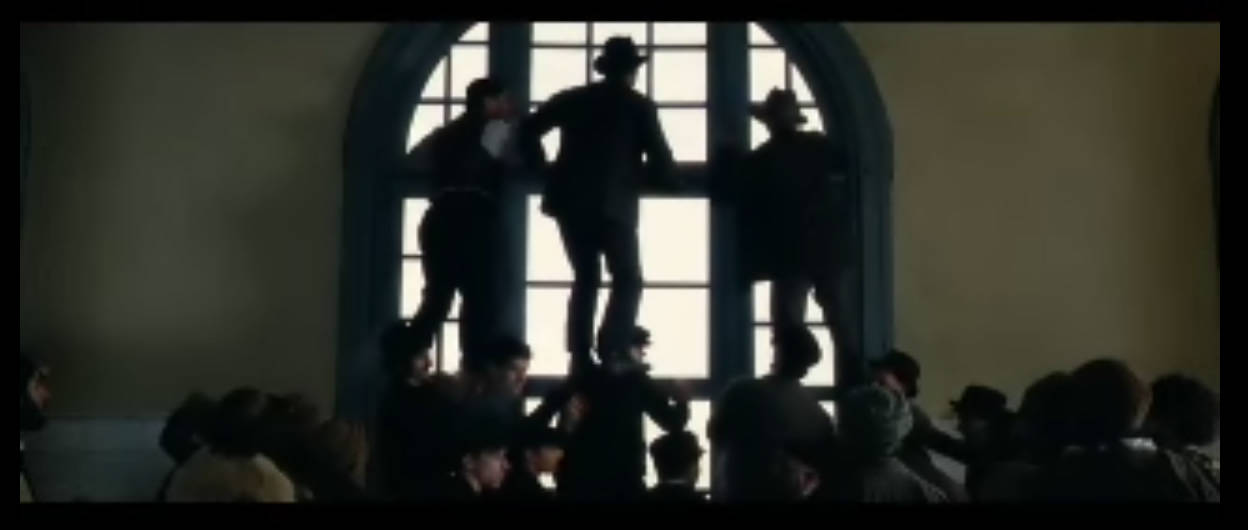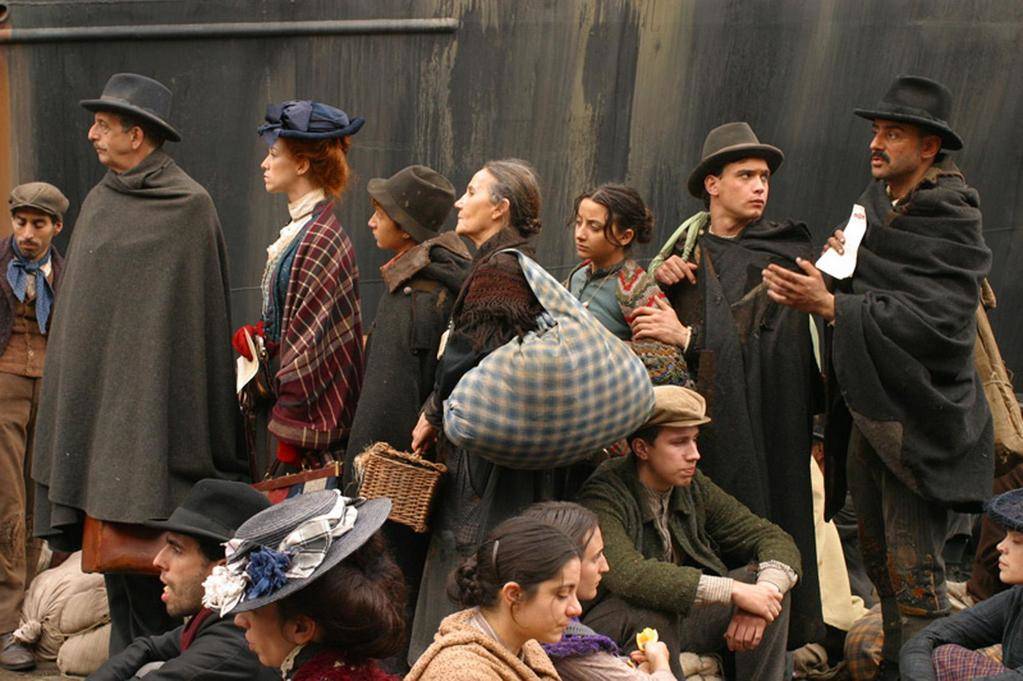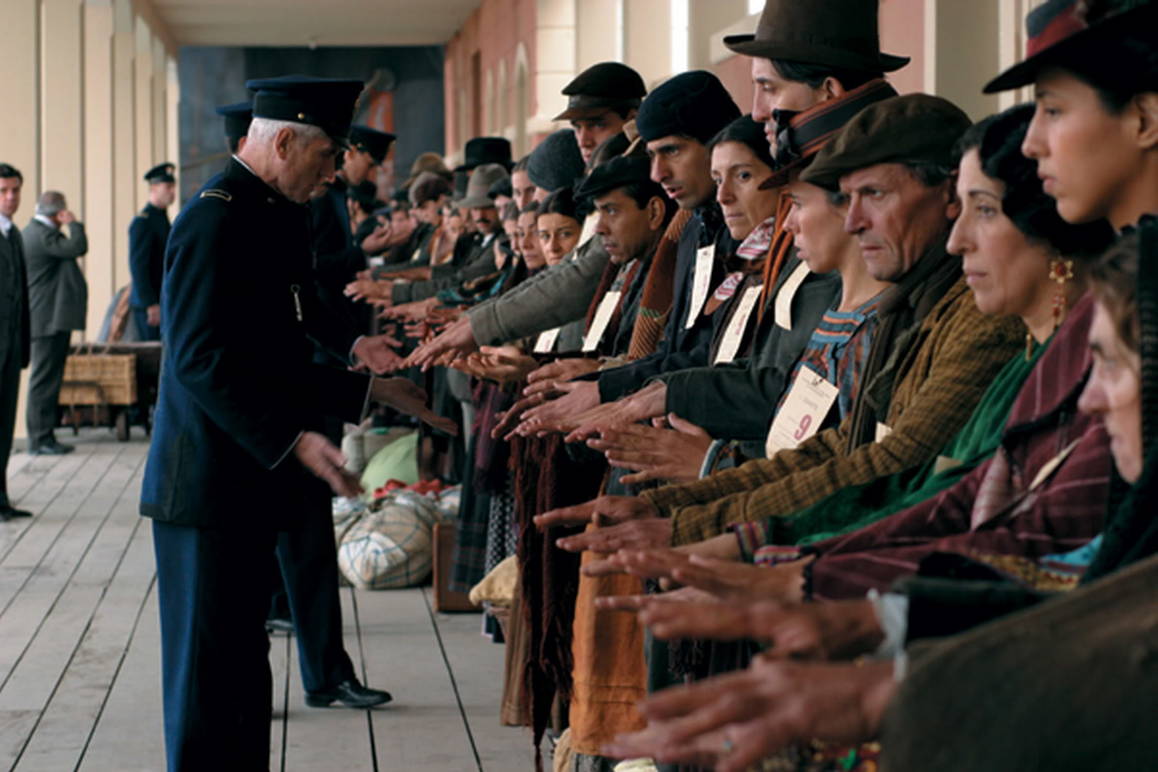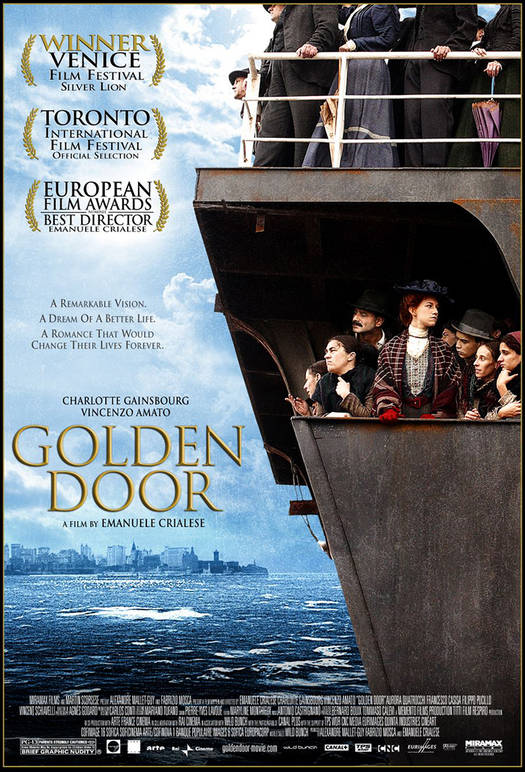Where are the Golden Door and the “Neworld” Heading?
When Donald Trump signed his Executive Order “Protecting the Nation From Foreign Terrorist Entry Into the United States” and we witnessed – flabbergasted – its wide-ranging and worrisome consequences on all kinds of people coming from the seven banned countries he selected, I was preparing for my classes, and happened to be working on a lecture and discussion of Emanuele Crialese’s film Golden Door (Nuovomondo – in Italian). This is the first film I regularly assign in my “Italian Americans in Film” course, which has provided over time several opportunities to discuss historical issues in connection to the present. Yet, prior to this week, never have issues concerning the past had such strong reverberations onto our immediate context.
Crialese’s 2006 film about historical migration from Italy to the U.S. is a creative, yet closely researched, take on concepts that in these days are omnipresent in the public debate: the image of the U.S. as a land of immigrants; the process of vetting those arriving at its boundaries; and the rejection of those deemed “unfit.” In following the travails of an extremely poor Sicilian family, the Mancusos, embarking on the transatlantic journey to reach the U.S. at the time of Mass Migration, the film provides a detailed depiction of the departure, travel and arrival of immigrants to the U.S. at large. Mutatis mutandis, it’s not hard to extrapolate to a Syrian family searching for a new opportunity after much deprivation and suffering in their home country. The film’s section about Ellis Island works as an effective mosaic of scenes about medical and IQ checks as well as race-based categorizations, revealing the excesses and shortcomings of a vetting process designed to keep America great… so to speak. As the majority of the immigrants provide as much relevant information as they can in order to be approved, some find the courage to challenge the system asking uncomfortable questions to the inspectors:
“Who are you, God Almighty? Are you the ones who decide whether we are good enough to get into your land of another world?”
The powerful words of the old grandmother Fortunata, the only member of the family who resists the relocation plan for the family, echo powerfully in our ears as we try to enter, empathetically, into the minds and hearts of those left outside the borders or detained in anonymous tension-filled airport inspection rooms in these days. The hyper-rational plan of controlling access, imbued with legacies from theories of eugenics, intrinsically runs the risk of cold-heartedly, if not irrationally, excluding on the basis of group-based characteristics and not individual ones (one piece of “collateral damage” being of course the fate of actual visa and green card holders whose legitimate status has been questioned in these days). Other unflattering analogies abound when we read the specific provisions of the Executive (dis)Order that since Friday has created havoc in and outside the U.S. in the name of protection of national interests, an illusory term in a world in which inter-, trans-, and supra-national relations are at the heart of any nation’s functioning.
For those of us living so close to that very statue that lifts its lamp beside the golden door in the New York Bay, the question about where the new world of the Mancuso family, “America”, is heading has never been more pressing. And, as professors in touch with the younger generations, our courses provide excellent arenas to discuss these issues in non-partisan yet well-informed ways: the recent initiative #ImmigrationSyllabus, a website and educational resource to help the public understand the deep historical roots of today’s immigration debates, is a much-needed tool to engage with this ever-present history of human relocation. Clearly, as citizens turned into perpetually-engaged dissenters, in the name of human and constitutional rights, we have to look at this history as well as at the real “new world” we live in, made up of infinite trans-global connections, in order to fight against extreme border-protection measures bound only to create more tension and risks.
* Teresa Fiore is Associate Professor and Inserra Chair in Italian and Italian American Studies, Montclair State University.





































i-Italy
Facebook
Google+
This work may not be reproduced, in whole or in part, without prior written permission.
Questo lavoro non può essere riprodotto, in tutto o in parte, senza permesso scritto.